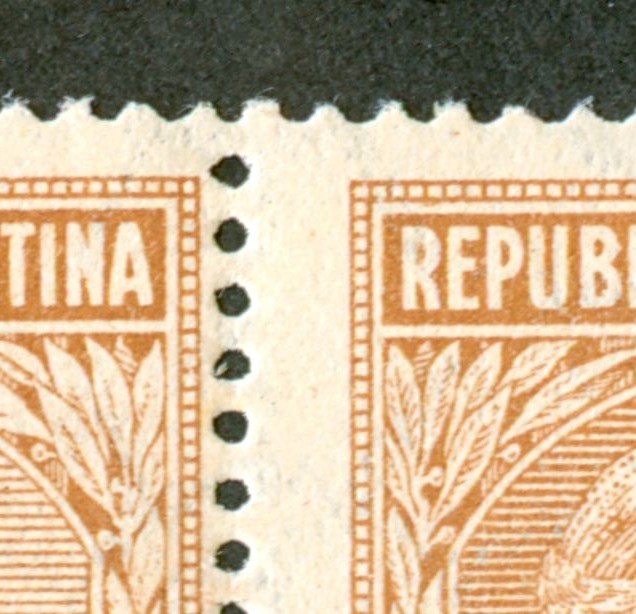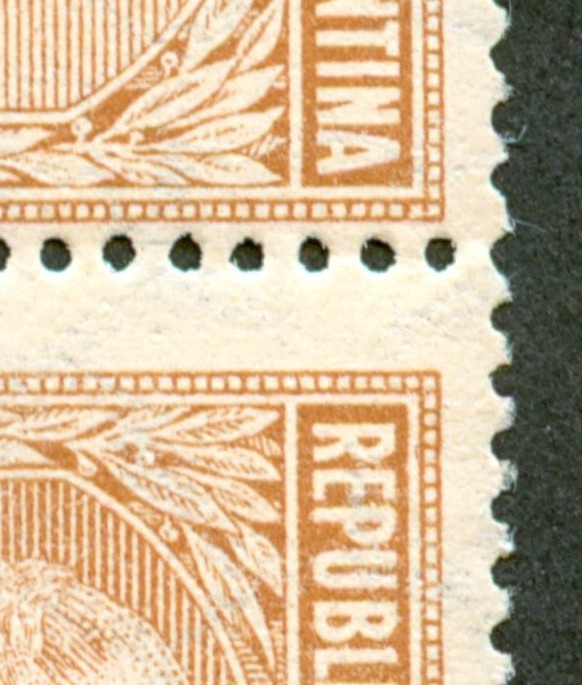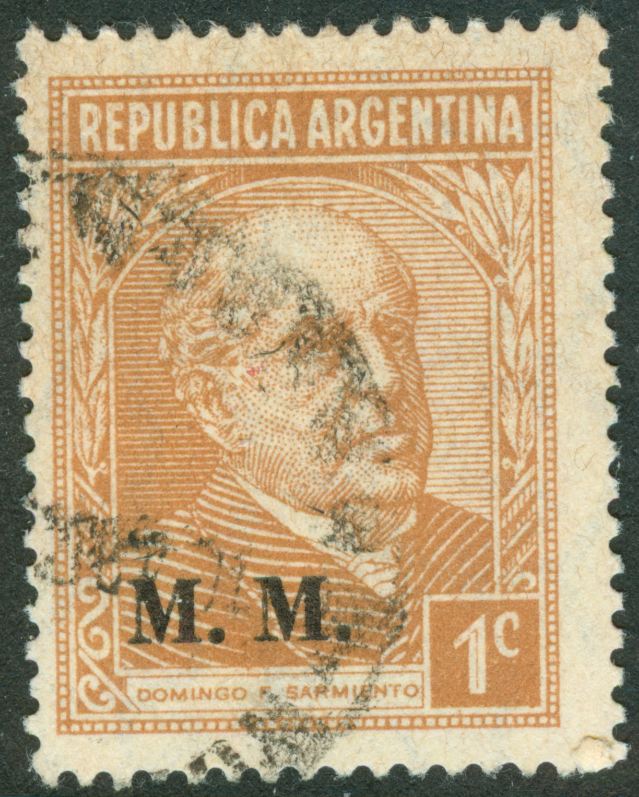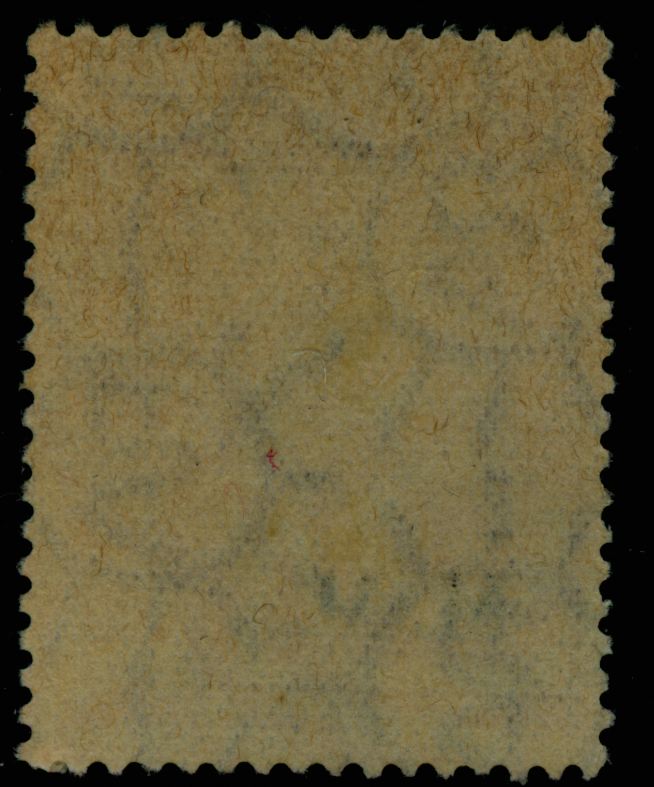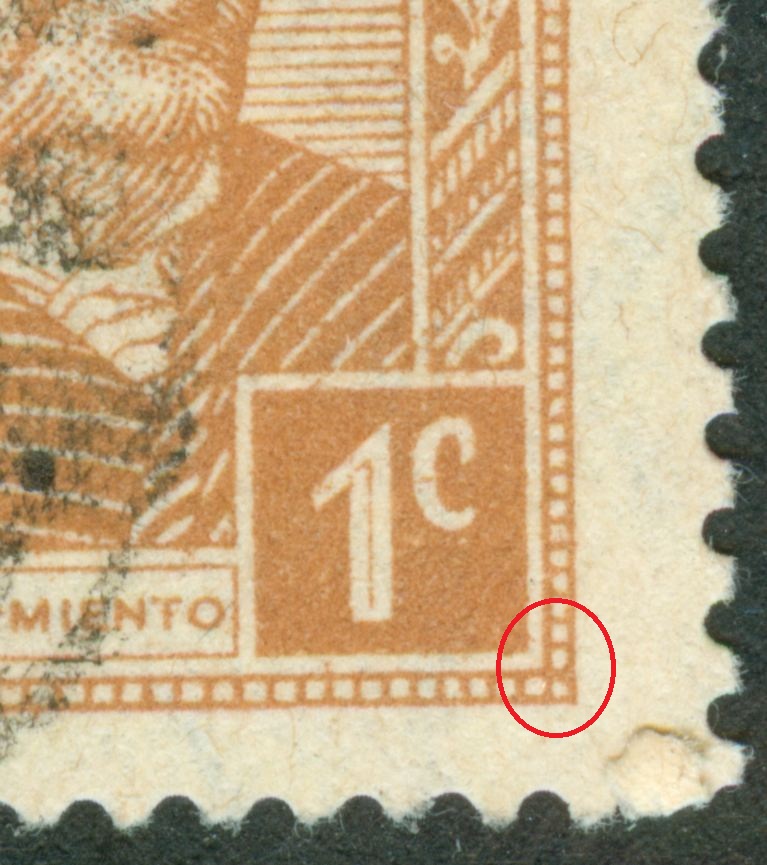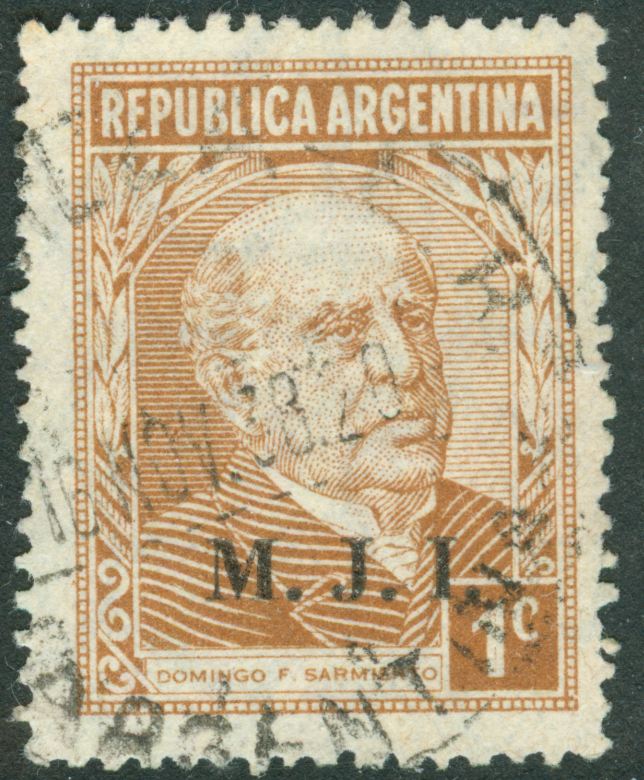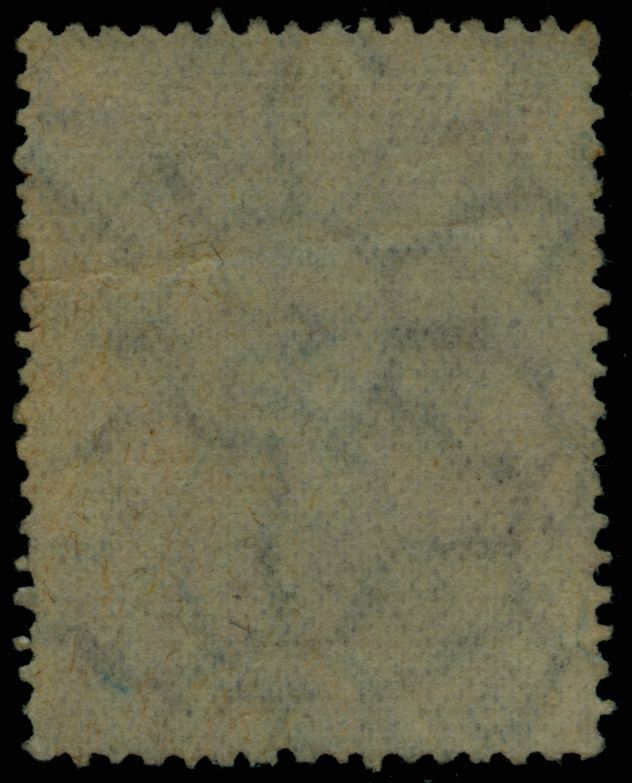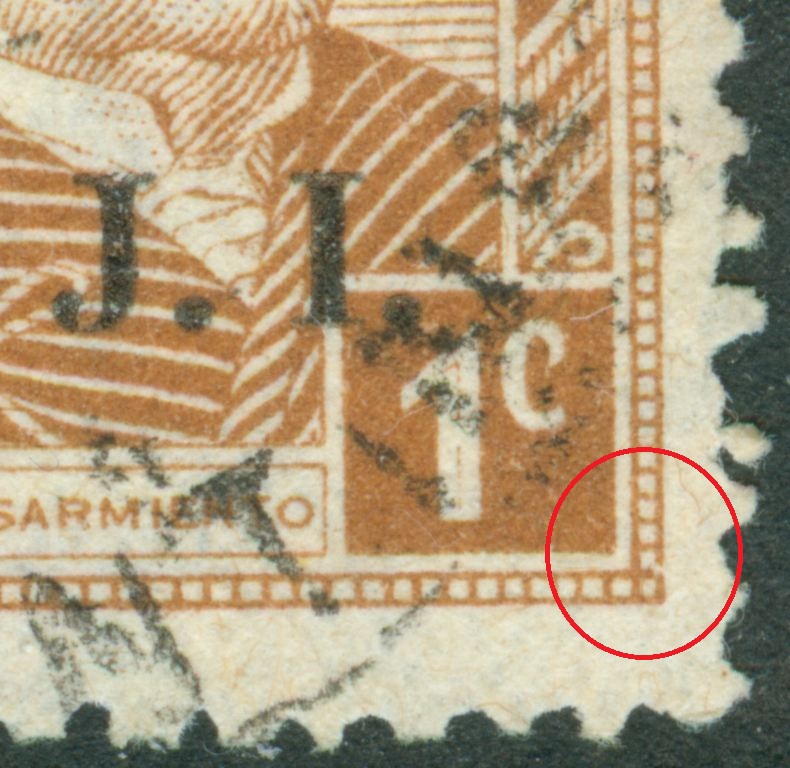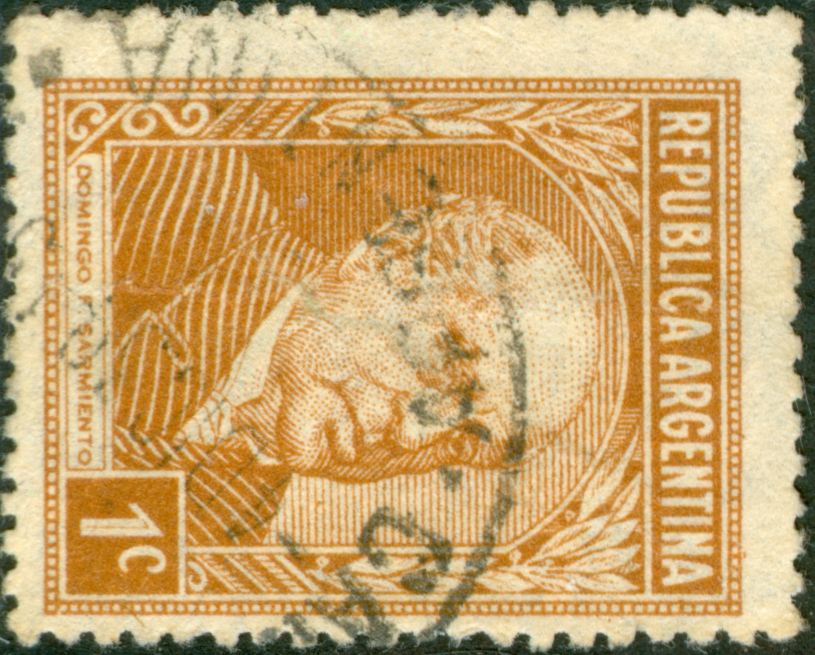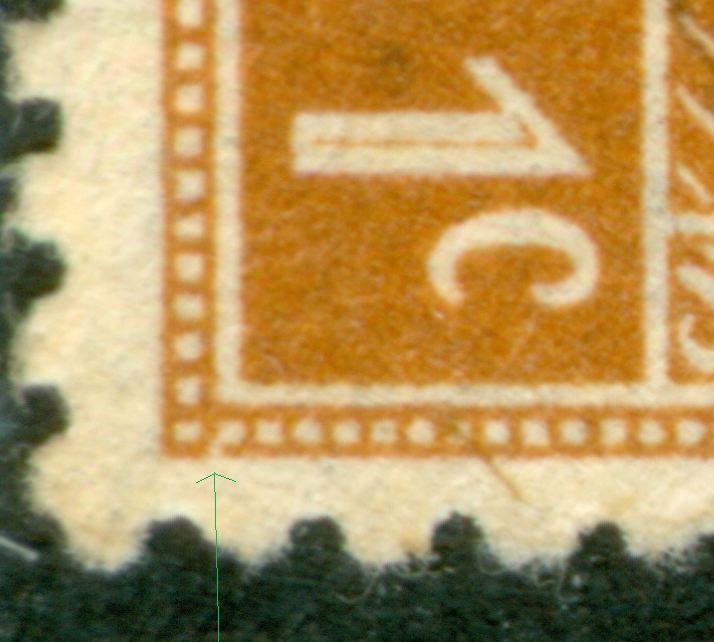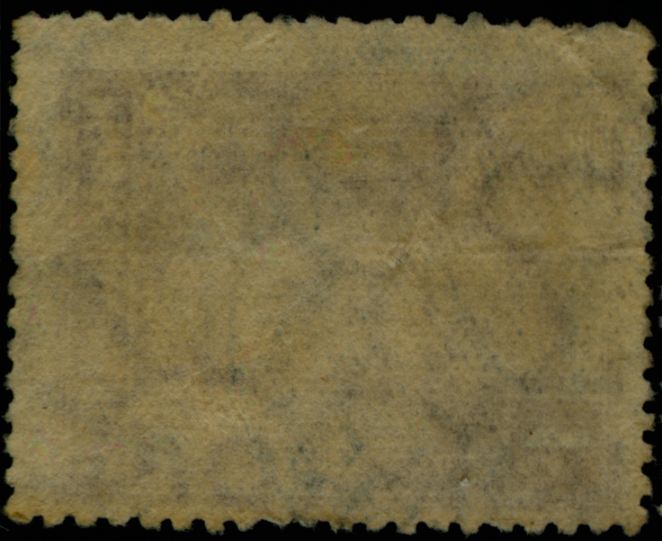This stamp is surprisingly rare. It was used mostly in mid to late 1937.

A dated specimen showing early use.

Here are two back scans showing the watermark (1E1).


This is the earliest cover I have. It is postmarked May of 1937.


Moderador: Rein








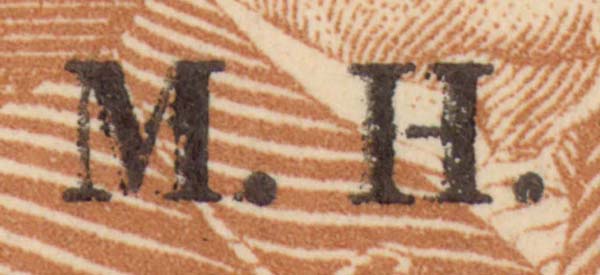













































































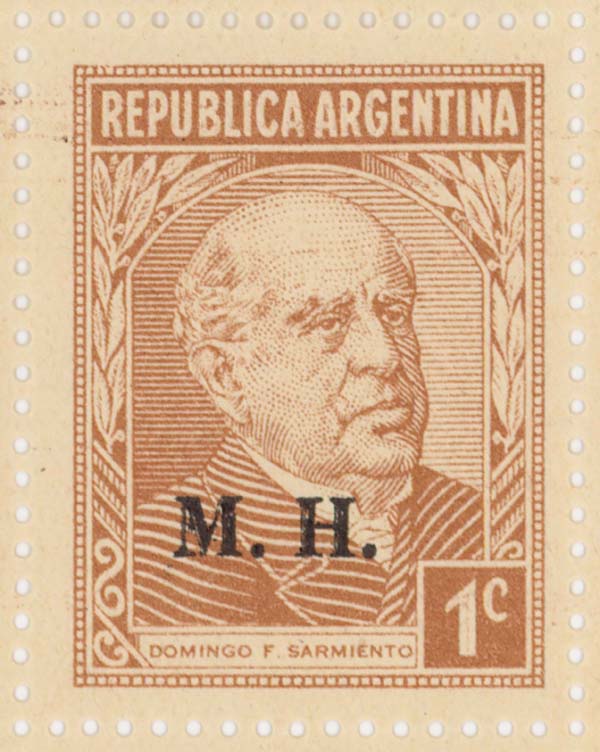


Tony,rubiera escribió:The 1ct1E1
This stamp is surprisingly rare. It was used mostly in mid to late 1937.
A dated specimen showing early use.
Here are two back scans showing the watermark (1E1).
This is the earliest cover I have. It is postmarked May of 1937.

rubiera escribió:Yes, typography for the 1ct1E discussion. I am mixing both in the same post. The plating is for the litho version.

Compare your position 41 with my position 141!!!!The 1c D.F. Sarmiento has 2 types when you look at the right bottom corner.
Type I [is it really the oldest one??] has NO break, type II has a tiny break. A real First Day Cover might give evidence:
The root block here is 5x5 what we can tell by the characteristics in blue and green!
1st column, 8th row:
Same row but 5 columns to the right; 6th column, 8th row:
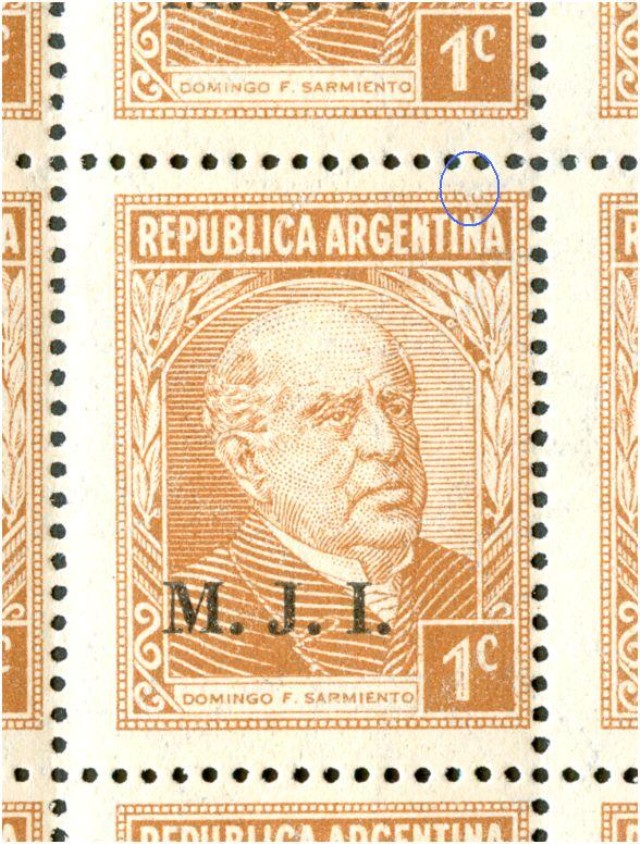

Tony,rubiera escribió:1c1E1 plating, left pane, rows 1 and 6
This plating is of the left pane of the 1c plate that was used beginning October 1, 1935. The complete pane has 20 columns and 10 rows (200 stamps). This plate was composed in die blocks of 5 by 5 in a grid of two vertical die squares by four horizontal die squares. If you add 100 to the plate positions in the top half of this half sheet, you should find a similar position in the lower half of this left hand pane.
Position 3
Position 8
Position 103
Position 108
